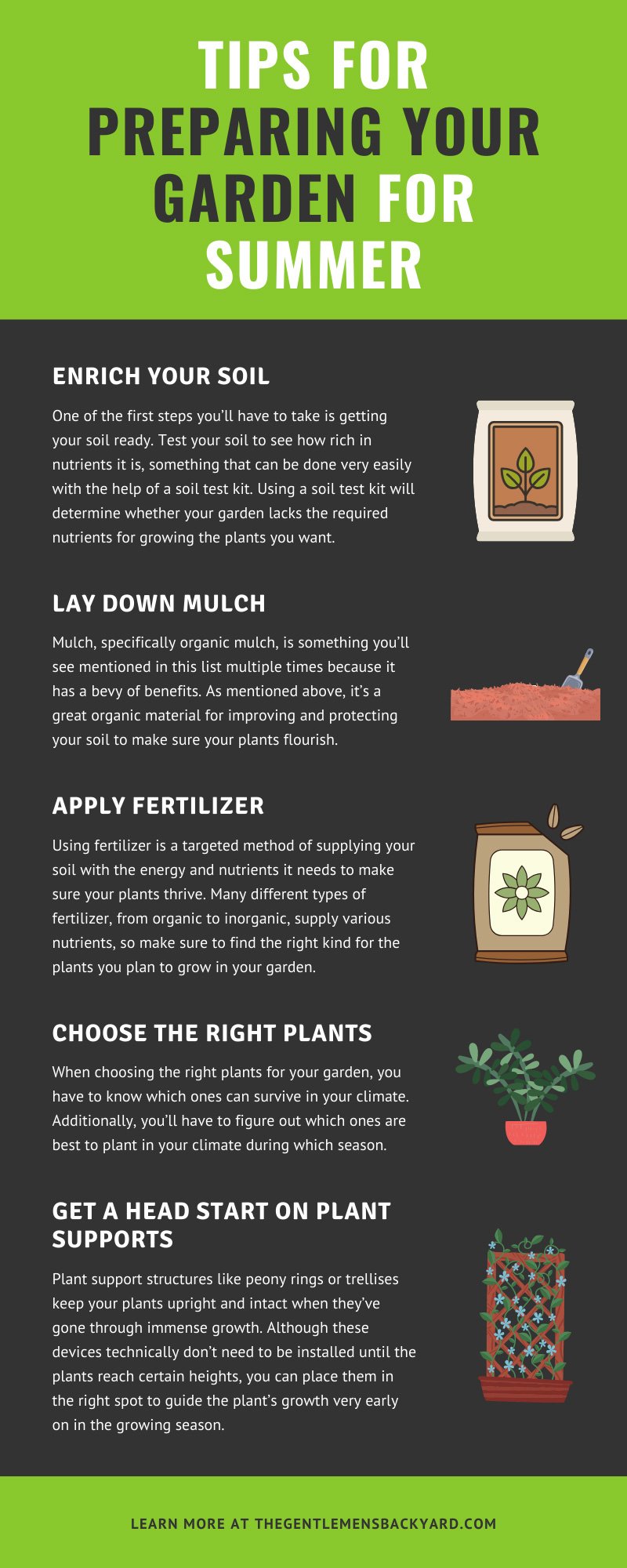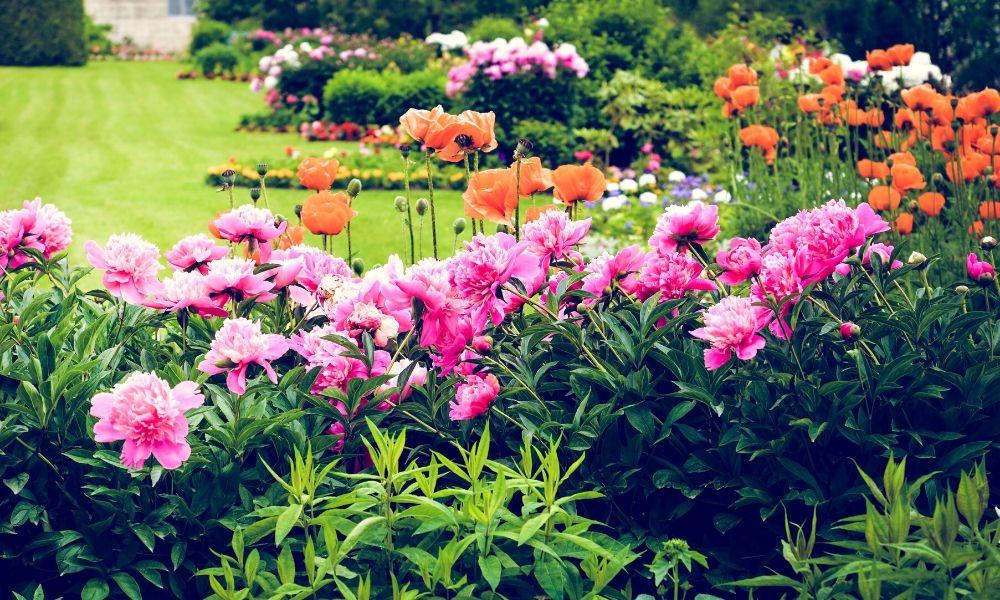Which plants you can grow in your home garden depends greatly on the season you’re doing your planting. As the summertime approaches, it’s a good time to start preparing your garden for this new season of planting. If you need a refresher on how to get your garden ready, take a look at these tips for preparing your garden for the summer growing season. By paying special attention to these tips, you’ll have a better understanding of how your garden needs to be primed and ready for the summer weather.
ENRICH YOUR SOIL
One of the first steps you’ll have to take is getting your soil ready. Test your soil to see how rich in nutrients it is, something that can be done very easily with the help of a soil test kit. Using a soil test kit will determine whether your garden lacks the required nutrients for growing the plants you want. Some of the most important nutrients that your soil must supply your plants with are calcium, magnesium, nitrogen, phosphorus, potassium, and sulfur.
Next, you’ll need to gather the materials you need to enhance your soil and begin composting. The process of composting is the best way to get the necessary nutrients into your soil. It’s recommended that you start your own compost pile at home, but if you haven’t, you can purchase bags of compost from professionals.
Lay Down Mulch
Mulch, specifically organic mulch, is something you’ll see mentioned in this list multiple times because it has a bevy of benefits. As mentioned above, it’s a great organic material for improving and protecting your soil to make sure your plants flourish. Layered on top of your garden soil up to the base of your plants, mulch can increase water retention in the soil. By doing this, the mulch can successfully combat winter injury in any vulnerable plants.
This organic material is even a great deterrent for weeds as well, which can be a particularly pesky issue during the warm summer months. Additionally, pulling weeds by hands, as long as you get the root, is a time-honored method that is very effective and requires only a handheld weeding tool and some elbow grease. Herbicides are also an effective way to deal with these unwanted garden intruders.
Apply Fertilizer
Using fertilizer is a targeted method of supplying your soil with the energy and nutrients it needs to make sure your plants thrive. Many different types of fertilizer, from organic to inorganic, supply various nutrients, so make sure to find the right kind for the plants you plan to grow in your garden. At the end of the day, the most important nutrient you want the fertilizer to supply is nitrogen.
Nitrogen is widely considered to be the number one most important nutrient you need to supply to your garden for it thrive. It’s a main component of chlorophyll, which plants use in the process of photosynthesis as they convert sunshine into energy. Adding nitrogen and other fertilizers correctly will help ensure your home garden will have rich, nutritious soil for your plants to grow in.
CHOOSE THE RIGHT PLANTS
When choosing the right plants for your garden, you have to know which ones can survive in your climate. Additionally, you’ll have to figure out which ones are best to plant in your climate during which season. Cool-season vegetables can be planted in summer for fall harvest, as can flowers that bloom in the fall, such as mums, pansies, and dahlias.
It may seem backward to new gardeners, but once you practice this annually, you’ll see why it’s so important to get a head start on planting fall-blooming greenery during summer. Lush peonies, beautiful in single and double varieties, are a great example of plants that should be planted during the fall so they can properly survive during the winter and bloom the following late spring. Gentleman’s Backyard Garden has a plethora of gorgeous peony flowers for sale that you can use to beautify your home garden setup.
Another key part of choosing the right plants is knowing how much shade they require. Some flowers, such as coreopsis, require between six to eight hours of full sun to grow, whereas others require full shade to grow. However, many plants require partial shade. This means that the plant requires sun for only a few hours and should be under shade for the rest of the day. That’s why, when buying flowers, you have to buy types that can work in your garden. For example, If you don’t have any means of providing shade in your garden, then you probably shouldn’t buy a plant that needs shade, such as a fern. If you want to create shade, however, you can do so by planting full-sun plants that can bloom large enough to create shade for other plants.
GET A HEAD START ON PLANT SUPPORTS
Plant support structures like peony rings or trellises keep your plants upright and intact when they’ve gone through immense growth. Although these devices technically don’t need to be installed until the plants reach certain heights, you can place them in the right spot to guide the plant’s growth very early on in the growing season. Not only will a trellis look great with the right garden, but gardeners will also find it a fulfilling experience to see those plants slowly fill out the trellis over the course of the summer season.
Now that you’re all caught up on the topic of summer gardening, you’re ready to get out there and break ground on your brand-new home garden. These helpful tips for preparing your garden for summer will help your greenery grow strong and healthy during the duration of the season. Good preparation teamed with forward thinking are the key elements you need to properly plant a garden during any given month. By understanding which plants need to be planted each season and why, you can effectively maintain an abundant home garden all year round.



